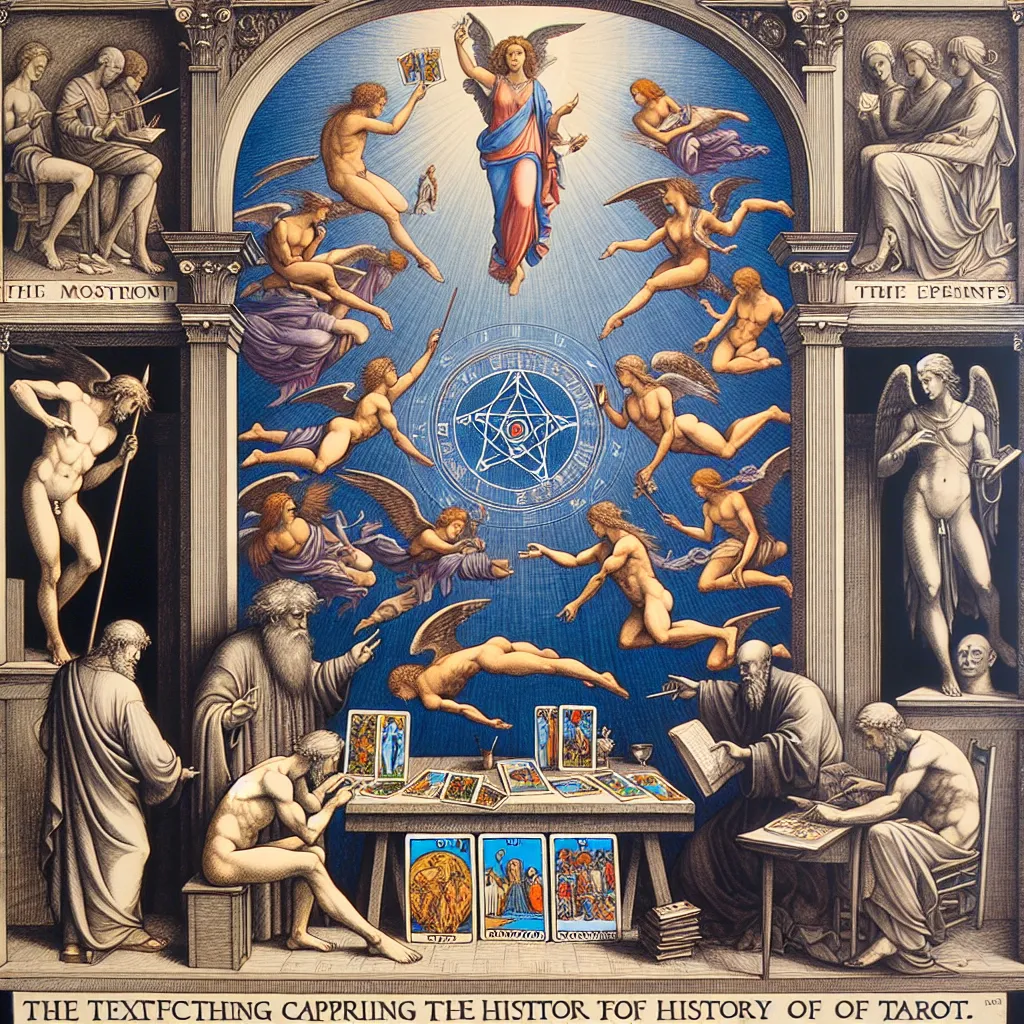
- Published on
- Authors

- Name
- You
The History of Tarot: From Ancient Mysticism to Modern Practice
Tarot cards have fascinated and mystified humanity for centuries, serving as both a powerful tool for divination and a window into the subconscious. The rich tapestry of Tarot's history weaves together ancient symbolism, mystical practices, and a continually evolving understanding of self. Let us embark on a journey through time, tracing the origins and evolution of the Tarot deck from ancient mysticism to its modern-day applications.
Origins: The Mystical Roots
Ancient Egypt and the Mysteries of Thoth
Some scholars and mystics trace the Tarot's origins back to ancient Egypt, attributing its creation to the god Thoth, the deity of wisdom, magic, and writing. It is believed that these early cards contained profound esoteric knowledge, encoded in symbols and images that mirrored the universe's structure.
| Symbol | Meaning |
|---|---|
| Ankh | Eternal life |
| Eye of Horus | Protection and healing |
| Scarab | Transformation and rebirth |
The Influence of Kabbalah
The Jewish Kabbalistic tradition has also left its mark on the Tarot. The 22 Major Arcana cards are often linked to the 22 paths of the Tree of Life, a central glyph in Kabbalistic teachings. This connection adds a deep, philosophical layer to the Tarot's symbolism, merging numerology, sacred geometry, and astrological principles.
The Renaissance: Rebirth of the Tarot
Transition to Europe
Tarot cards made their way to Europe in the late 14th century, where they initially served as playing cards for aristocrats. Known as "carte da trionfi" in Italy, or "cards of triumph", these early decks evolved into the Tarot we recognize today. Artists like Bonifacio Bembo created exquisitely detailed cards for the Visconti-Sforza family, blending Christian iconography with ancient symbolism.
| Tarot Suit | Italian Equivalent | Symbolism |
|---|---|---|
| Cups | Coppe | Emotions and relationships |
| Swords | Spade | Conflict and intellect |
| Pentacles | Denari | Material wealth and career |
| Wands | Bastoni | Creativity and action |
The Birth of Divination
The first documented use of Tarot for divination dates back to the 18th century. Parisian occultist Jean-Baptiste Alliette, known as Etteilla, published a guide to Tarot readings, linking the cards to astrology and ancient Egyptian lore. This era marked the Tarot's transition from a deck of playing cards to a profound tool for mystical exploration and personal insight.
Modern Tarot: A Tool for Self-Reflection
The Rider-Waite-Smith Revolution
In the early 20th century, the collaboration between occultist Arthur Edward Waite and artist Pamela Colman Smith revolutionized Tarot. The Rider-Waite-Smith deck introduced vivid, illustrative scenes for each card, making it accessible to a broader audience. Its symbolism draws heavily on Western esoteric traditions, including Kabbalah, astrology, and alchemy.
| Major Arcana | Symbolism | Interpretation |
|---|---|---|
| The Fool | New beginnings, potential | Embrace new opportunities with an open heart |
| The High Priestess | Intuition, mystery | Trust your inner wisdom and intuition |
| The World | Completion, fulfillment | Celebrate your achievements and the journey ahead |
Tarot in the Modern Era
Today, Tarot is embraced by a diverse range of practitioners, from mystics and therapists to artists and self-help enthusiasts. It serves as a mirror, reflecting our innermost thoughts, fears, and aspirations. Modern Tarot decks feature a wide array of themes, from traditional symbolism to contemporary interpretations, making them a versatile tool for both personal growth and creative expression.
Science Meets Mysticism: The Psychology of Tarot
Contemporary researchers have explored Tarot's psychological aspects, with some likening it to Carl Jungs concept of archetypes. Each card represents universal themes and experiences, allowing individuals to project their subconscious thoughts and feelings onto the cards.
- The High Priestess resonates with the Anima archetype, representing the feminine inner voice.
- The Magician embodies the Persona, the outward mask we present to the world.
- Death symbolizes transformation and the Shadow, our hidden, suppressed desires.
Conclusion: The Ever-Evolving Tarot
From its mystical origins in ancient Egypt to its contemporary role in psychology and self-reflection, the Tarot's history is a testament to humanity's enduring quest for knowledge and spiritual insight. Whether you seek guidance, creativity, or a deeper understanding of yourself, the Tarot remains a timeless tool, ever-evolving to meet the needs of each new generation.
Explore the vast and magical world of Tarot, and let the cards reveal the wisdom that lies within you.
